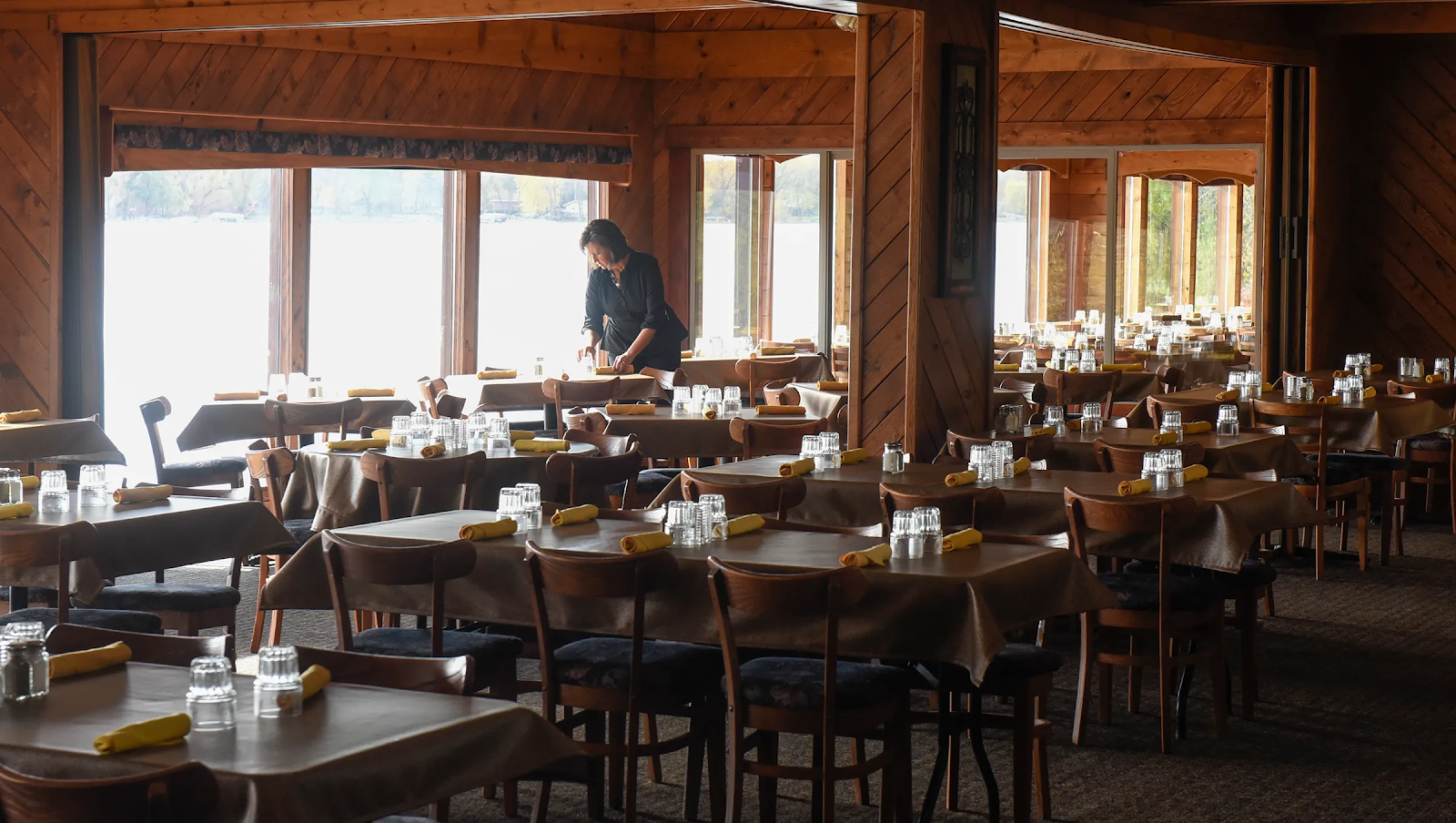Still in pursuit of Michael and Elizabeth Schotl's farm, we decided to check out Pleasant Lake and took the short drive to the 400 Supper Club that spreads out along the lakefront. From the front room you can see most of the lake and activity which was of pontoon boating, water skiing, and rubber rafting. The lake was clean with a large bed of lily pads just out front.
The beer list lacked much in the way of locally brewed choices but the food was good. The service was slow and more attention should have been paid to cleaning up vacated tables, but we were willing to indulge for the sake of the genealogy quest. After dinner we browsed the bulletin board and found some history among the many photos, match book covers, and other but no mention of any Schotls . Maybe this is because the dance hall/pavilion creations and expansions all took place on the other side of the section line. Some of the Schotls may have put their dollars down and enjoyed club membership. They may have walked down the spiral staircase "to sit on the porch and enjoy the cool lake breezes" but unless we find the original membership list we won't know for sure.
Covid closed down the 400 club but it has recently (2022) been reopened under new management.
We spent most of the next day at the Stearns County History Museum and Research Center, checking the gift shop for relevant books, touring the exhibits and working in the research center. We were looking for plat maps, information on Hanson's dance hall and wanted to copy Schotl listings out of the Polk directories.
Soon after settling into the research center, an older gentleman came over, sat down and started looking through our files and the files that had been pulled for us. No introduction, no way of knowing who he was. It was a bit disconcerting. It soon became apparent that he knew his way around the archive. He said he had grown up in the area, his relatives had owned businesses in Rockville and he was now volunteering at the museum. He said he was there 7 days a week and that it "sure beat a rocking-chair".
A few days later, after we were home and I was searching the web for items about Rockville and St. Cloud granite quarries, I discovered who the volunteer was when I found his obituary on the St. Cloud "facebook" page. His name was Robert J. Lommel, known locally as "Bicycle Bob". He had died just four days after our visit and his contributions to our story.
Before we started our research, we toured the Museum exhibits. We were particularly fascinated by the granite quarry display. In the small theatre we watched a video of the granite industry.
The WPA mural, "Construction-St. Cloud ", originally done in 1937, by David Granahan for the local post office has been relocated to the museum. It is featured near the granite display.
For the many times that I have driven by and admired the Minnesota State Capitol and the St. Paul Cathedral, I never made the connection that granite from the Rockville area was used in their construction. The Cathedral was Archbishop John Ireland's last pet project for which he chose the architect, raised the funds, and almost daily supervised the construction. All good Catholics, regardless of their meager wage, were asked to contribute. Although James J. Hill had contributed to other Catholic building projects, his name is conspicuous by its absence from this donor list. Saint Paul Cathedral, Saint Paul MN
Even before they moved off the farm some of Michael and Elizabeth Schotl's sons worked in the granite industry. Those that left the farm often settled in the St. Cloud area either living with siblings or spouses. They are listed in St. Cloud Polk Directories as quarrymen, drillers, sawyers, helpers and humpers.
Since its founding in 1856, St. Cloud has had a history of many valuable manufacturing industries. Though a sawmill was the first major manufacturing organization in town, it soon became the granite industry that really defined St. Cloud. With the first quarry opening in 1863, there are now over 30 granite quarries in the Greater St. Cloud Area. And thus, the “Busy, Gritty Granite City” was born.
Of interest to our family is the fact that many of the cranes and derricks used in the industry were made by the American Hoist and Derrick Co. of St. Paul. My father, Reynold Glaeve, was employed by the company as a machinist after his stint in the CCC's. At one point he and I spent time going over an old company catalog. He was able to tell me about machine parts on which he had worked. I know he would have enjoyed seeing photos of this heavy equipment in the granite quarries.
So much learned but still much to discover. Next time we need to get to the courthouse and research the property records.





No comments:
Post a Comment